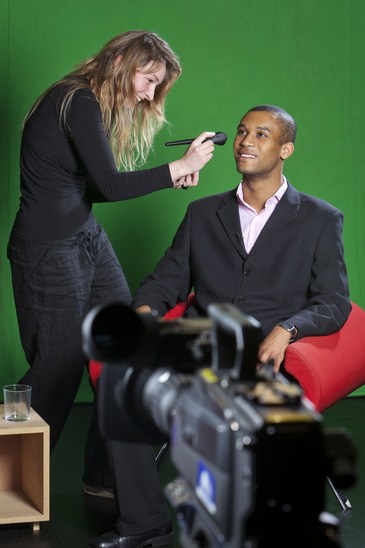This is a continuation of our post about the Production phase of producing a business or commercial video.
Generally speaking, commercial and business video crews are significantly smaller than that of a feature film or a television program and that’s primarily due to the size of the budget. The most expensive aspects of producing any video are the personnel necessary to turn an idea into reality. There are one (or two or three) man bands, so to speak – producers who wear a lot of hats and give themselves hyphenated titles like preditor (producer-editor) or writer-producer-director, etc. Many business-oriented production companies work this way and they are every bit as talented and capable as larger companies. But sometimes it’s most efficient and easier to work with a filled-out crew.
Beyond a producer and a director a typical crew often includes:
- Videographer or Director of Photography (DP) – the difference is that a videographer is often a solo camera operator and a DP has one or more individuals on his or her crew to assist with camera operations, i.e., Assistant Camerapersons, Focus Pullers, Digital Imaging Technician (DIT), etc. A Camera Operator (whether that’s a person on a DP’s crew or a solo videographer has a very important and complicated job – responsible
for making sure the pictures are properly framed, exposed and in focus, as well as captured to whatever capture media is being used for the production. It is a role that requires meticulous attention to the most arcane technical details.
- Production Designer/Art Director – a large production with many sets or locations requires a Production Designer to manage an entire crew of Art Directors, Set Designers, Carpenters, Painters, Property (Props) Masters, and so on, but for a smaller production that has requirements for sets to be dressed with props, furniture and other objects, an Art Director is often sufficient.
- Audio Recordist/Boom Operator – one individual often manages these two positions. The recordist is responsible for mixing the audio from multiple microphones and capturing the data onto cards or a hard drive. Sound derived from a boom microphone (suspended from a pole and held by a boom operator) is usually more natural sounding than audio captured by a hidden, body microphone. Often, depending upon conditions, the recordists will record with multiple kinds of microphones to give the editor a choice of sonic quality in the Post-Production phase.
- Gaffer/Grip(s) – the gaffer is responsible for lighting the project, based on the direction of the Videographer. On a small crew the Videographer may do her own lighting, but when the lighting requirements go beyond a small two or three-light kit, a producer will often hire a Gaffer. Grips may work for the Gaffer if the lighting is particularly complex or time-consuming.
- Grips – there are several different kind of Grips: dolly and camera support Grips, lighting and electric Grips, set and production design Grips. In each department that utilizes the services of Grips, e.g., Lighting, Camera, Sets, etc., there is usually a Key Grip who’s in charge of all… grip activity for that department. Gripping!
- Hair and Makeup – you might see the abbreviation for this department as HMU, but not all Makeup artists do hair and vice versa. With the introduction of HD video, skilled Makeup artists are highly sought after, due to the subtlety they need to employ when preparing talent for camera. HD is very high resolution and poor makeup jobs sticks out like sore thumbs.
- Costume Designer/Wardrobe – depending upon the size and nature of the production this role may be eliminated, particularly for a business video in which non-professional actors wear their own clothing. But if actors appear in the video, a designer who manages a wardrobe department often dresses them.
There are as many additional roles as there jobs for those individuals, from animators to zoetrope operators (okay, there is no such thing as a zoetrope operator, but you get the idea). But for most business videos, the key crew positions described above will fit the bill to get your next project produced.



 for making sure the pictures are properly framed, exposed and in focus, as well as captured to whatever capture media is being used for the production. It is a role that requires meticulous attention to the most arcane technical details.
for making sure the pictures are properly framed, exposed and in focus, as well as captured to whatever capture media is being used for the production. It is a role that requires meticulous attention to the most arcane technical details.